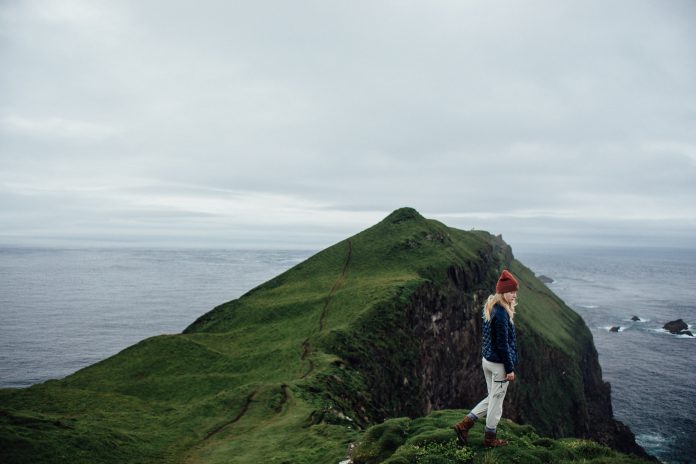
The Faroe Islands has managed to punch above its weight with its tourism campaigns in recent years. Smaller, more remote destinations often have to be pretty creative in order to get attention.
Guðrið Højgaard , CEO of Faroe Islands Tourism, has just returned from Skift Global Forum 2019 in New York, where she spoke together with speakers include CEOs and top executives from Booking Holdings, Delta Air Lines, Expedia, Air France-KLM, Marriott International, Amtrak, and many more.
When you’re small, sometimes you have to do something bold to get noticed.
The Faroe Islands, has had to think creatively when it comes to persuading people to come and visit.
In fact, one of the ways it has done this is by telling people not to come — at least for one weekend. Earlier this year, it closed a number of popular tourist sites and invited 100 volunteers from 25 countries to work with locals on improvement works. It gave 3,5 billion exposures to the Faroe Islands.
The idea fits into the quirky, idiosyncratic image the island chain, which is technically a self-governing part of Denmark, has been trying to cultivate in recent years.
Tourism has continued to grow with revenue from the sector, with visitor numbers rising steadily in recent years, but the Faroe Islands is conscious of the fine line it has to walk to make sure locals continue to see the benefits.
Guðrið Højgaard, CEO of Visit Faroe Islands to Global Skifts Forum:
How did you come up with the idea of turning the Faroe Islands into an un-destination?
Guðrið Højgaard: In 2013, when our destination brand was launched, a survey was conducted where 5,000 guests, who had already visited the islands, were asked to describe the islands. Most of them described the Faroe Islands as something “un-“: unspoiled, unexplored, unexploited, unpolluted, untamed (nature), unplugged, and so on.
Marketing is all about taking positions. People visit our islands because of the nature and the culture, just like so many other places. As many similar destinations to ours had already taken their position in this area (Norway: powered by Nature, New Zealand: 100 percent pure nature, etc.), we decided to take another step and set ourselves apart from the rest — the Faroe Islands was going to be the UN-destination: It is difficult to explain the islands; you must experience them for yourself.
What are the particular challenges of marketing the Faroe Islands to tourists?
Højgaard: That we are unknown and many times not even visible on world maps. At the same time, this has become an advantage lately, rather than a disadvantage, as travelers of today are looking for unknown and authentic destinations.
Do you want a particular type of tourist to visit?
Højgaard:” Our aim has never been to get as many tourists as possible, but rather people that “match” with our destination: People who respect nature and are interested in the local culture and the experiences that we can offer. A big part of our guests are early adapters: people who have traveled to many places and are seeking unexplored destinations. Our small economic resources limit us to focus primarily on the European market and now, to a certain degree, the American market.”
Is sustainability part of your tourism message?
Højgaard:” Yes. In February of this year, we launched a sustainable tourism development strategy toward 2025. It is called Join the Preservolution — it is an evolution and a solution, with preservation at its core. It highlights four main cornerstones that focus on attracting a certain type of traveler; on spreading tourism across all islands, all year round; on knowledge and professionalization of our industry; and, finally, on advocating for a new legislative framework regarding sustainable access to land.
In our globalized world, the general tendency is urbanization, where people move to bigger cities and abandon small remote places like ours. Our aim is to prove the opposite: that remote places can be extremely interesting to visit, can teach our guests many lessons and provide unforgettable experiences.
Simultaneously, tourism creates a new economic pillar in our society, making it more attractive to live in (new jobs, more income, new restaurants, new events, etc.). In the Faroe Islands, we now face a population surplus compared to deficit only a few years back. Tourism is one of various reasons for that.” , The number of tourists has nearly doubled Gurid Højgaard took over as CEO in 2012 and the budget tribled from 6 to 20 million DKK in the same periode. At the moment hotel-investments in the Faroe islands has crossed the line of 0,5 billion DKK.’
























